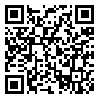Fri, Nov 21, 2025
[Archive]
Volume 39, Issue 1 (1-2025)
Med J Islam Repub Iran 2025 |
Back to browse issues page
Download citation:
BibTeX | RIS | EndNote | Medlars | ProCite | Reference Manager | RefWorks
Send citation to:



BibTeX | RIS | EndNote | Medlars | ProCite | Reference Manager | RefWorks
Send citation to:
Hamidi H, Najafi Sarem S, Lotfi A H. Exploring Hedging Devices in Scientific Research Papers: A Content Analysis Study of the ‘Medical Journal of the Islamic Republic of Iran’. Med J Islam Repub Iran 2025; 39 (1) :1136-1143
URL: http://mjiri.iums.ac.ir/article-1-9847-en.html
URL: http://mjiri.iums.ac.ir/article-1-9847-en.html
Department of English Language, School of Health Management and Information Sciences, Iran University of Medical Sciences, Tehran, Iran , Hamidi.h@iums.ac.ir
Abstract: (234 Views)
Background: Hedging generally serves several important rhetorical and epistemic purposes in academic writing, allowing authors to qualify their claims, delay potential challenges, and preserve their credibility. This study aimed to identify the most frequently used types of hedging devices in basic science and clinical science research studies and to determine whether there was a significant difference in the use of hedging devices between these two types of research studies published in the Medical Journal of the Islamic Republic of Iran (MJIRI) in 2024.
Methods: This study employed a quantitative, corpus-based research design. Three PhD holders in applied linguistics examined the whole 150 published papers in 2024 in MJIRI and extracted the hedging devices manually from the conclusion sections of the papers. The frequency and type of the hedging devices were counted and recorded. The number and frequencies of the basic science and clinical science papers were recorded separately for later comparison. Hu and Cao’s (2011) simplified taxonomy was used to classify the data. Descriptive statistics and Chi-Squared Tests were run using SPSS version 22 to answer the questions.
Results: In the clinical science papers, hedging were used 330 times, while the number was 154 for the basic science. In all four categories of the taxonomy, clinical studies enjoyed more hedging devices than basic science ones. The result of the inferential test showed that there was no statistically significant difference in using hedging devices between basic science and clinical science research studies (P=0.064).
Conclusion: Hedging is not limited to specific disciplines but is also influenced by journal standards and cultural factors. The findings underline the importance of balancing hedging with clarity, especially in medical writing where precise communication is essential.
Methods: This study employed a quantitative, corpus-based research design. Three PhD holders in applied linguistics examined the whole 150 published papers in 2024 in MJIRI and extracted the hedging devices manually from the conclusion sections of the papers. The frequency and type of the hedging devices were counted and recorded. The number and frequencies of the basic science and clinical science papers were recorded separately for later comparison. Hu and Cao’s (2011) simplified taxonomy was used to classify the data. Descriptive statistics and Chi-Squared Tests were run using SPSS version 22 to answer the questions.
Results: In the clinical science papers, hedging were used 330 times, while the number was 154 for the basic science. In all four categories of the taxonomy, clinical studies enjoyed more hedging devices than basic science ones. The result of the inferential test showed that there was no statistically significant difference in using hedging devices between basic science and clinical science research studies (P=0.064).
Conclusion: Hedging is not limited to specific disciplines but is also influenced by journal standards and cultural factors. The findings underline the importance of balancing hedging with clarity, especially in medical writing where precise communication is essential.
Type of Study: Original Research |
Subject:
General
Send email to the article author
| Rights and permissions | |
 |
This work is licensed under a Creative Commons Attribution-NonCommercial 4.0 International License. |








